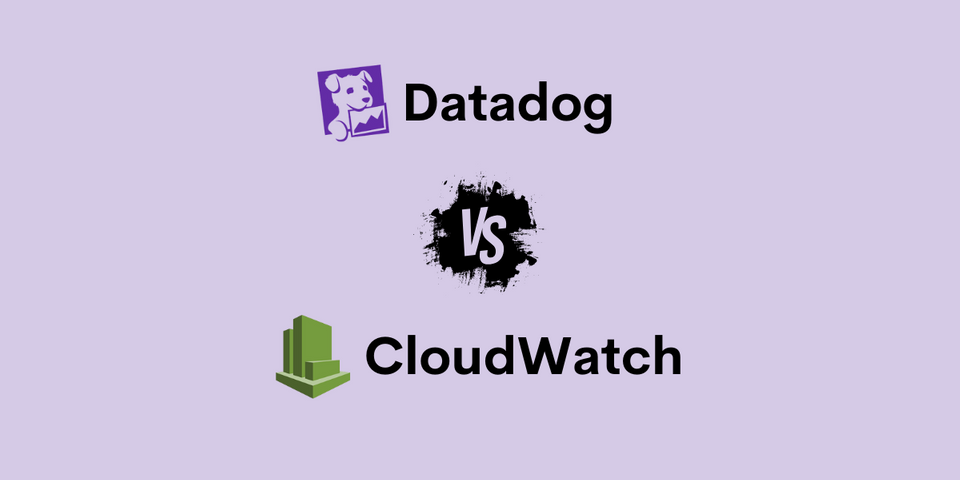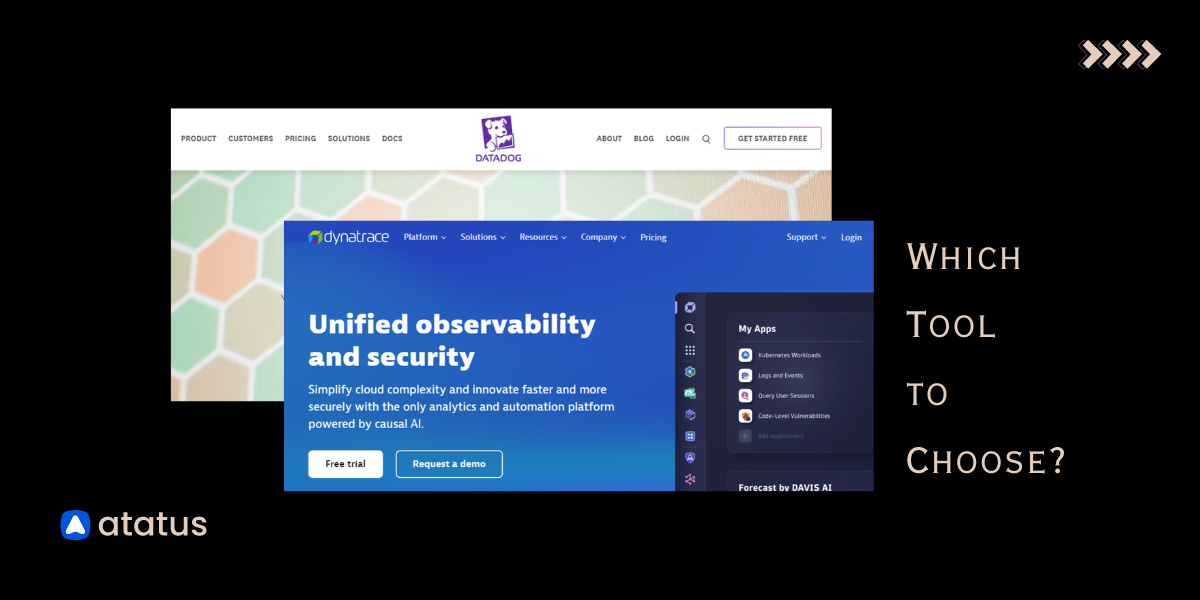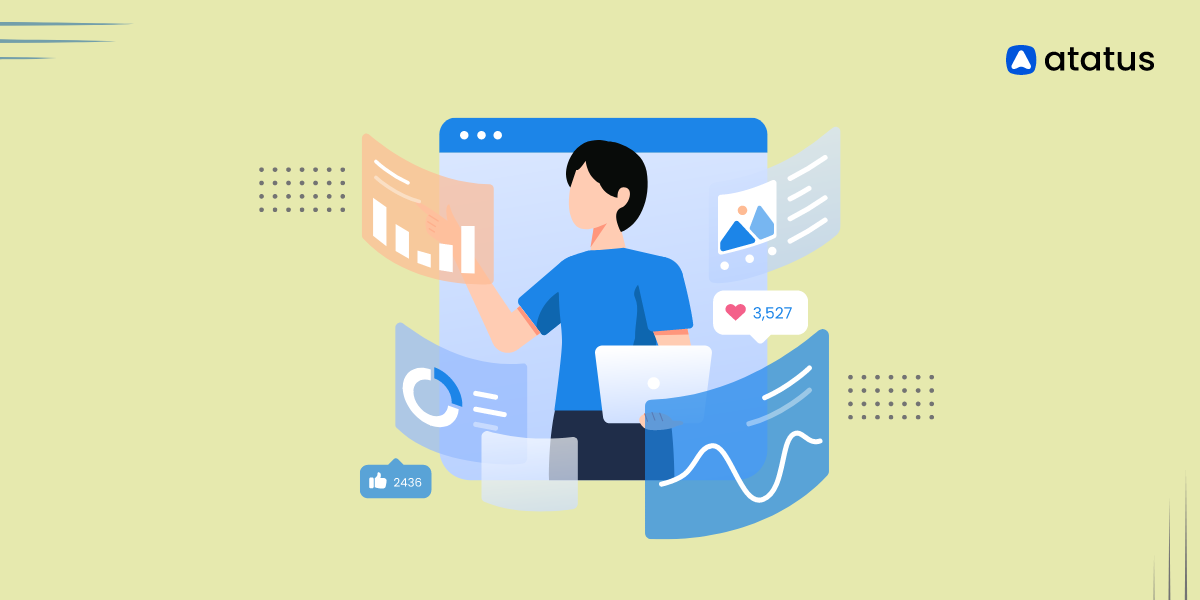DataDog vs Cloudwatch - Choosing the Right Monitoring Tool
With the increasing complexity of modern applications and cloud infrastructures, monitoring and observability have become essential for maintaining performance, reliability, and security.
Organizations need tools that provide actionable insights into their systems, enabling them to detect issues early and optimize resource usage. Two leading monitoring solutions in the market today are Datadog and Amazon CloudWatch.
Here arise the questions:
- Which tool best fits your organization's requirements?
- What are the key differences between Datadog and CloudWatch?
- Is CloudWatch a viable Datadog alternative for AWS users?
This guide provides a deep dive into Datadog vs CloudWatch, helping you make an informed decision based on your cloud environment, infrastructure monitoring needs, and budget.
What is Datadog?
Datadog is a cloud-based monitoring and security platform that provides full-stack observability. It offers real-time monitoring, logs monitoring, security analysis, and application performance monitoring (APM) across multiple cloud providers, including AWS, Azure, and Google Cloud.

Key Features of Datadog:
- Multi-cloud and hybrid cloud support
- Infrastructure monitoring across servers, containers, and networks
- Application Performance Monitoring (APM)
- Log management and analytics
- Security monitoring
- AI-driven insights and anomaly detection
- Highly customizable dashboards
What is CloudWatch?
Amazon CloudWatch is AWS’s native monitoring and observability service designed to track AWS resources and applications. It collects logs, metrics, and events to help AWS users optimize performance and troubleshoot issues.

Key Features of CloudWatch:
- Native AWS integration for monitoring AWS services
- Infrastructure monitoring focused on AWS workloads
- Application performance monitoring for AWS environments
- Centralized logging and event monitoring
- Automated scaling and alarms
- Cost-effective for AWS users
Why Compare Datadog and CloudWatch?
Choosing between Datadog and CloudWatch depends on several factors, such as the complexity of your infrastructure, the need for multi-cloud monitoring, customization options, and cost considerations.
Cloud Complexity & Multi-Cloud vs AWS-Only Environments
If your organization operates in a multi-cloud or hybrid environment, you need a tool that supports various cloud providers. Datadog is designed for this, offering extensive integrations across AWS, Azure, Google Cloud, and on-premise environments.
If you are an AWS-exclusive organization, CloudWatch provides a cost-effective, natively integrated solution with Amazon’s services, eliminating the need for third-party tools.
Infrastructure & Application Monitoring Needs
Datadog provides full-stack monitoring, covering applications, logs, security, and network observability. It offers deep insights into system performance, anomaly detection, and troubleshooting tools.
CloudWatch primarily focuses on AWS resource performance, providing basic insights into application health but with limited integrations beyond AWS services.
Customization & Dashboards
Datadog offers highly customizable dashboards, allowing teams to visualize data across multiple platforms and tailor insights based on business needs.
CloudWatch provides pre-built dashboards tailored for AWS services, but customization options are more restrictive compared to Datadog.
Ease of Use & Integration
Datadog is known for its user-friendly interface and extensive integrations with over 600 third-party services. It provides seamless monitoring across cloud providers, making it a strong choice for teams that need flexibility beyond AWS.
On the other hand, CloudWatch is deeply integrated with AWS, offering native monitoring for AWS services. However, it requires more manual configuration and does not provide the same level of out-of-the-box integrations as Datadog.
Security & Compliance
Datadog includes advanced security monitoring and compliance reporting, making it suitable for enterprises with strict regulatory requirements.
CloudWatch offers basic security monitoring but lacks the in-depth security analytics available in Datadog.
Pricing
Datadog follows a usage-based pricing model with multiple tiers, which can be expensive depending on data ingestion and features used.
CloudWatch offers a pay-per-use model, which can be cost-effective for AWS users but may become expensive with high log ingestion and API calls.
Datadog vs. CloudWatch: Key Differences
The table below summarizes the key differences between Datadog and CloudWatch:
| Feature | Datadog | CloudWatch |
|---|---|---|
| Multi-Cloud & Hybrid Support | Supports AWS, Azure, Google Cloud, and on-premise environments | Primarily designed for AWS; limited support for external services |
| Infrastructure & Application Monitoring | Full-stack monitoring, including logs, security, network observability | Focuses mainly on AWS resource performance |
| Integration with Third-Party Tools | 600+ integrations with third-party services | Limited integrations outside AWS ecosystem |
| Customization & Dashboards | Highly customizable dashboards across multi-cloud environments | Pre-built AWS dashboards with limited customization |
| Log Management | Advanced log analytics with full observability | Log storage with basic querying and filtering |
| Alerting & Notifications | Advanced alerting with AI-powered anomaly detection | Basic AWS-based alerting mechanisms |
| Ease of Use | User-friendly interface with automated setup | Requires manual configuration for many features |
| Pricing Model | Usage-based pricing with multiple tiers | Pay-per-use model, cost-effective for AWS users but can be expensive with high log ingestion |
When to Choose Datadog?
Choose Datadog if:
- You need multi-cloud and hybrid cloud monitoring.
- You require deep observability with APM, log management, and security monitoring.
- Customizable dashboards and AI-driven insights are important to your team.
- You are willing to invest in a premium monitoring solution for better insights and scalability.
When to Choose CloudWatch?
Choose CloudWatch if:
- You are running AWS-exclusive workloads.
- You need basic monitoring and logging within AWS at a lower cost.
- Native AWS integrations and automated scaling tools are a priority.
- You prefer an AWS-managed service without third-party dependencies.
Atatus - An alternative to DataDog and CloudWatch
Choosing the right observability tool depends on factors like multi-cloud support, cost-effectiveness, ease of use, and advanced analytics. While Datadog offers full-stack monitoring and CloudWatch is deeply integrated with AWS, both have limitations:
Datadog can become expensive as usage scales and requires configuration for advanced features. CloudWatch is AWS-centric, making multi-cloud and third-party integrations challenging.
Atatus can be a great alternative with cost-effective full-stack observability, multi-cloud support, and a user-friendly experience.

Datadog vs Cloudwatch vs Atatus
| Feature | Datadog | CloudWatch | Atatus (Alternative) |
|---|---|---|---|
| Multi-cloud support | Yes (AWS, Azure, GCP, on-prem) | Limited to AWS | Yes (AWS, Azure, GCP, on-prem) |
| Infrastructure monitoring | Covers full-stack resources | AWS-specific focus | Monitors servers, VMs, and containers across cloud platforms |
| Application Performance Monitoring (APM) | Advanced APM with tracing | AWS-native APM | Full-featured APM with distributed tracing |
| Log management | AI-powered log analysis | Basic AWS logging | Centralized log collection and analytics |
| Security monitoring | Threat detection and compliance | Relies on AWS Security tools | Inbuilt security monitoring & anomaly detection |
| Custom dashboards | Highly customizable | AWS-limited visualization | Fully customizable, intuitive dashboards |
| Pricing | Expensive as usage scales | Pay-per-use, high log costs | Cost-effective with transparent pricing |
Why Choose Atatus Over Datadog and CloudWatch?
- Better Multi-Cloud Support – Unlike CloudWatch, Atatus seamlessly integrates with AWS, Azure, and GCP.
- Cost-Effective – More affordable than Datadog while offering similar features.
- Easy to Use – Intuitive setup without complex configurations.
- End-to-End Observability – A single platform for logs, metrics, traces, and security monitoring.
- Scalability – Works efficiently for startups and enterprises without high overhead costs.
Try Before You Decide – Experience Atatus with a free trial and see the difference today!
#1 Solution for Logs, Traces & Metrics
APM
Kubernetes
Logs
Synthetics
RUM
Serverless
Security
More





